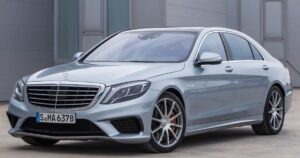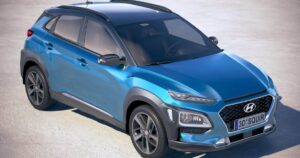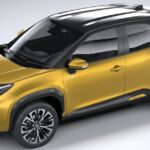Hybrid cars are unique in the world of automobiles. They combine two different types of engines to deliver both fuel efficiency and performance. Hybrid cars have two main types of engines a internal combustion engine and an electric motor.
These two components work together to improve fuel efficiency and reduce emissions. Hybrid cars have revolutionized the automotive industry. The growing concern for environmental issues and the need for more fuel-efficient vehicles have made hybrid cars a popular choice.
The Basic Structure Of Hybrid Cars
The hybrid car is designed to optimize fuel consumption and reduce emissions. The answer to how many engines a hybrid car has lies in its structure. The hybrid car typically has two main types of engines:
- A combustion engine, which runs on gasoline or diesel.
- An electric motor, powered by a rechargeable battery.
The combination of these two engines allows the hybrid car to switch between different energy sources, depending on the driving conditions.
How Do Hybrid Engines Work?
Hybrid engines work by combining the strengths of both gasoline and electric power. The two engines work together to optimize performance and efficiency.
The energy management system in a hybrid car determines when to use the gasoline engine and when to use the electric motor. This ensures the most efficient operation.
Why Do Hybrid Cars Have Two Engines?
The primary reason hybrid cars have two engines is to improve fuel efficiency. The electric motor can power the car at lower speeds, where fuel consumption is typically high.
When more power is needed, such as during acceleration or on highways, the combustion engine kicks in. This balance helps reduce fuel consumption and emissions.
The Electric Motor

The electric motor is the quieter of the two engines in a hybrid car. It is used primarily for short-distance driving or in stop-and-go traffic. The electric motor is powered by a battery that can be recharged through regenerative braking or by using the combustion engine.
- Low-Speed Efficiency: The electric motor is ideal for city driving.
- Regenerative Braking: This system allows the car to recharge its battery while slowing down.
- Environmental Benefits: The electric motor produces no emissions, making it environmentally friendly.
How The Gasoline Engine Works?
The gasoline engine in a hybrid car operates similarly to that in a conventional vehicle. It uses fuel to create energy through combustion. The engine’s primary job is to drive the car, especially at higher speeds. The gasoline engine is optimized for efficiency.
It may be smaller than engines found in traditional vehicles but it works in conjunction with the electric motor to provide the right amount of power when needed. The gasoline engine and the electric motor create a more efficient driving experience.
How Do Hybrid Cars Switch Between Engines?
The switch between the gasoline engine and the electric motor in a hybrid car is seamless. The car’s computer system decides which engine to use based on the driving conditions.
- City Driving: The electric motor is typically used for city driving, where speeds are lower, and frequent stops are common.
- Highway Driving: On the highway, the gasoline engine takes over, as it can provide more power for higher speeds.
- Acceleration: During acceleration, both the gasoline engine and the electric motor may work together to provide a boost in power.
The switch between power sources happens automatically, without the driver needing to do anything. This helps optimize fuel efficiency and reduce emissions.
The Role Of The Combustion Engine
The combustion engine in a hybrid car plays a crucial role in providing power when needed. It is especially useful for long-distance driving or when more power is required, such as on highways. Unlike conventional cars, hybrid cars only use the combustion engine when necessary.
- High-Speed Performance: The combustion engine delivers the power needed for highway driving.
- Fuel Optimization: The engine works in tandem with the electric motor to optimize fuel consumption.
- Long-Distance Efficiency: For longer trips, the combustion engine ensures the car can keep going without needing to recharge frequently.
Types Of Hybrid Engines

The two engines in a hybrid car are designed to work together seamlessly. The transition between the electric motor and the combustion engine is often smooth and unnoticeable to the driver. This collaboration ensures the vehicle performs efficiently under various driving conditions.
There are different types of hybrid engines available on the market. The most common ones include:
- Parallel Hybrid: In this type of hybrid, both the combustion engine and the electric motor can power the car independently or together.
- Series Hybrid: The combustion engine generates electricity to charge the battery, and only the electric motor drives the car.
- Plug-in Hybrid: This type of hybrid has a larger battery that can be charged via an external power source, allowing for longer electric-only driving distances.
Each type of hybrid engine offers different benefits, depending on the driving habits of the owner.
The Future Of Hybrid Engines
As technology continues to evolve, hybrid engines are becoming more advanced. Many automakers are investing in research to improve the efficiency of hybrid cars, making them even more environmentally friendly and cost-effective.
- Improved Batteries: New developments in battery technology are allowing for longer electric-only driving ranges.
- Greater Efficiency: Hybrid engines are becoming more efficient, reducing the need for gasoline even further.
- Widespread Adoption: As more people become aware of the benefits of hybrid cars, their adoption is expected to increase globally.
Maintenance Of Hybrid Engines
Maintaining a hybrid car is slightly different from maintaining a conventional car. Both the combustion engine and the electric motor need regular maintenance to ensure optimal performance.
- Battery Maintenance: The battery in a hybrid car may need to be replaced after several years of use.
- Engine Care: The combustion engine requires regular oil changes and inspections.
- Software Updates: Hybrid cars often come with advanced software that needs to be updated regularly to improve performance.
Benefits Of Hybrid Engines

Hybrid engines offer many advantages. The primary benefits include:
- Fuel efficiency: Hybrid cars use less fuel than traditional vehicles.
- Lower emissions: They produce fewer greenhouse gases.
- Quiet operation: The electric motor offers a quiet ride.
- Cost savings: Owners can save money on fuel costs.
Frequently Asked Questions
How many engines does a hybrid car have?
A hybrid car typically has two engines a combustion engine and an electric motor. These two engines work together to optimize fuel efficiency and performance.
Can the electric motor power the car alone?
Yes, the electric motor can power the car alone at lower speeds, especially during city driving or in stop-and-go traffic.
How is the battery in a hybrid car recharged?
The battery in a hybrid car is recharged through regenerative braking or by using the combustion engine as a generator.
Do hybrid cars produce fewer emissions than conventional cars?
Yes, hybrid cars produce fewer emissions because they use an electric motor for part of the driving, especially at lower speeds.
Conclusion
Hybrid cars are an innovative solution to the challenges of fuel consumption and environmental impact. By combining a combustion engine with an electric motor, hybrid cars offer the best of both worlds the power and performance of a traditional car with the fuel efficiency and environmental benefits of an electric vehicle.

Hello, Ride here I’m excited to share everything about hybrid cars. We provide helpful Tips And guide about hybrid cars.











